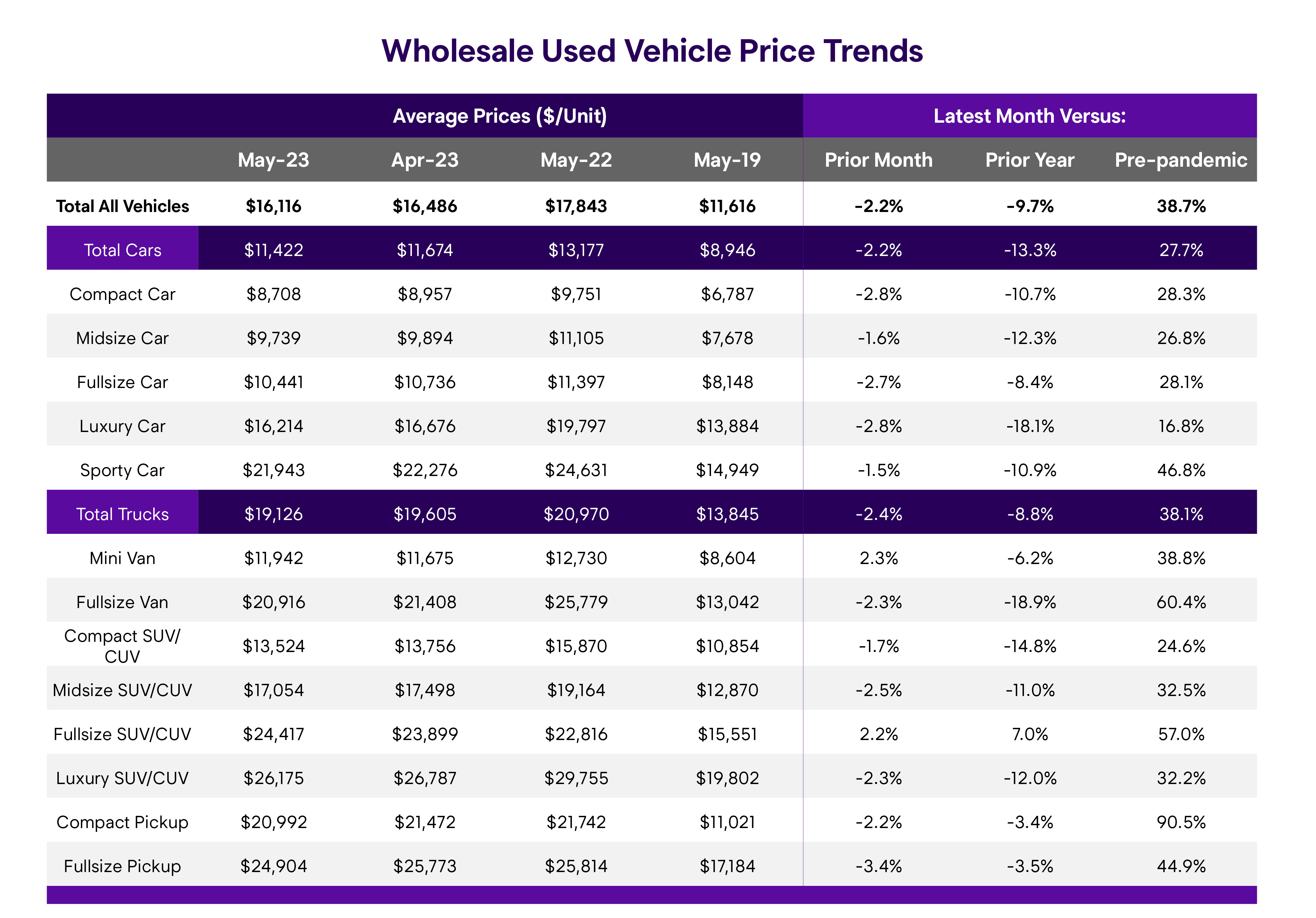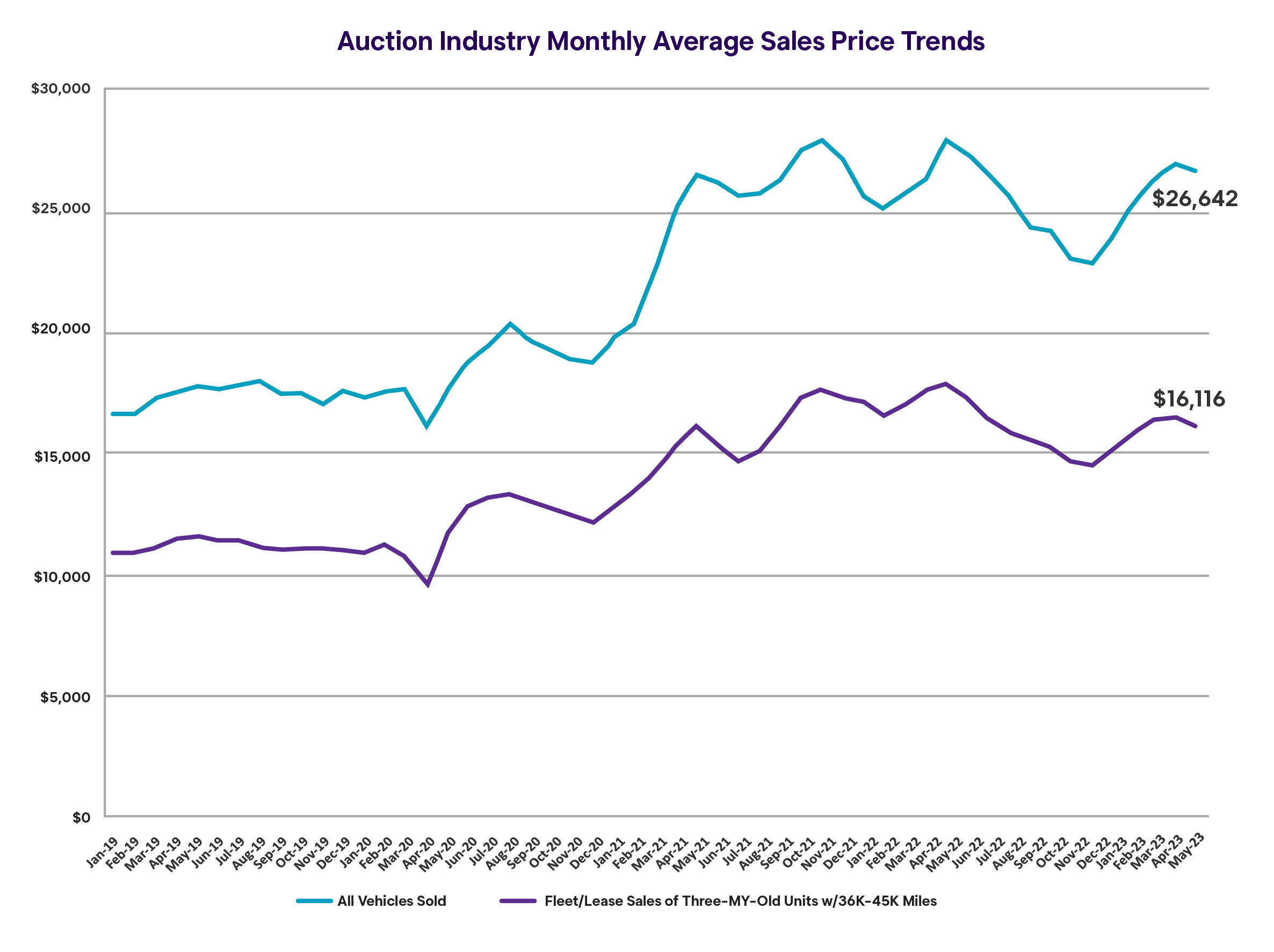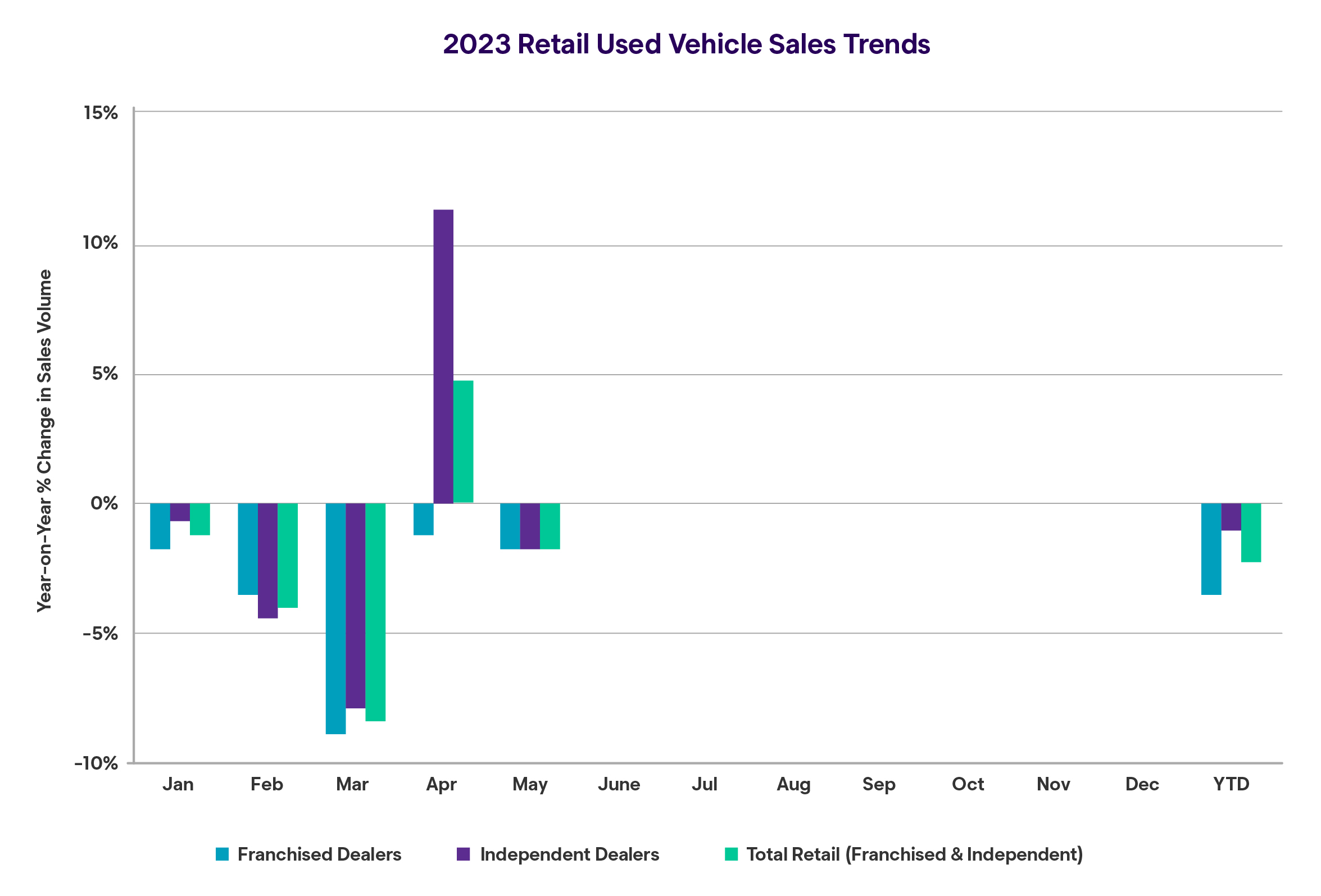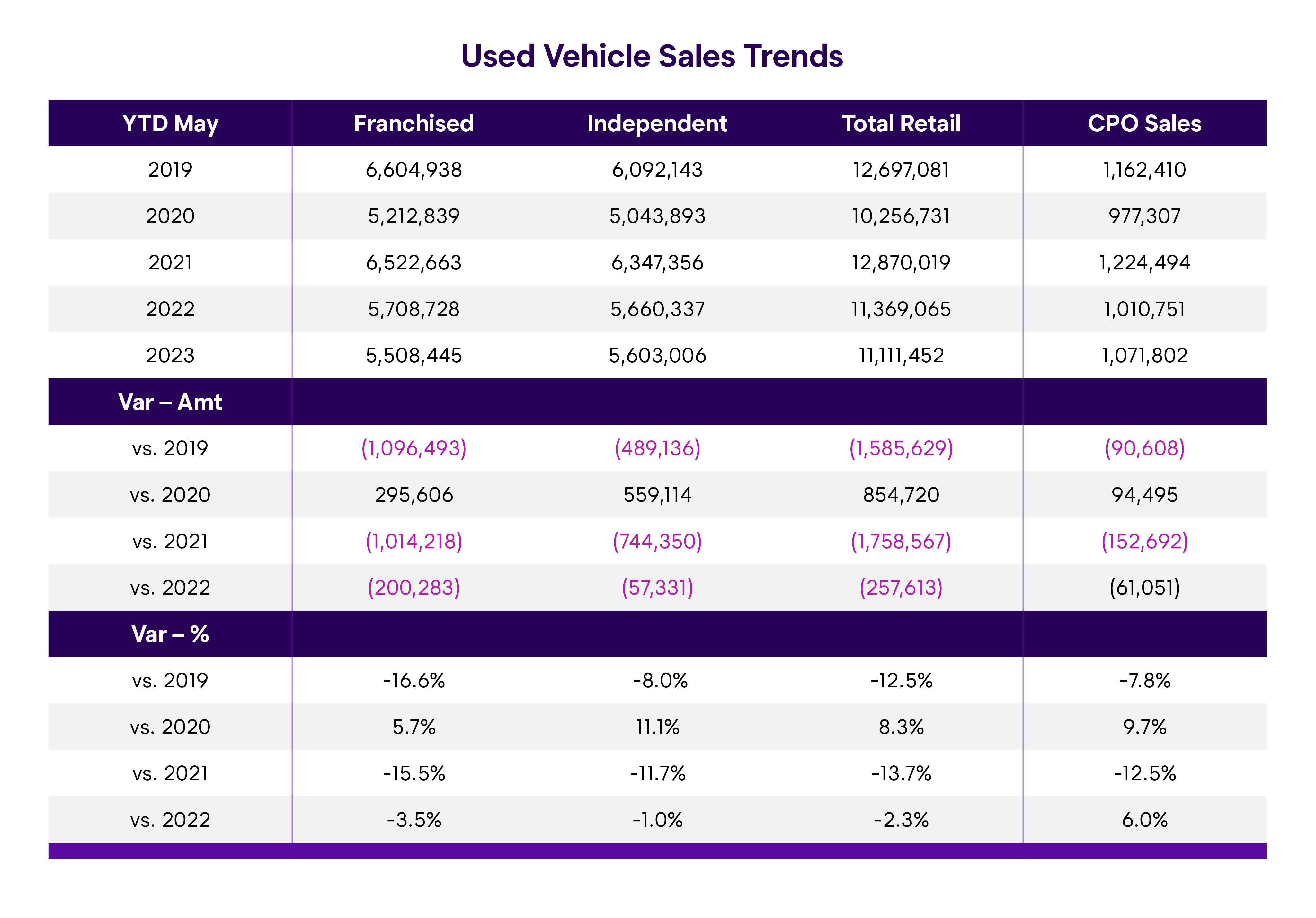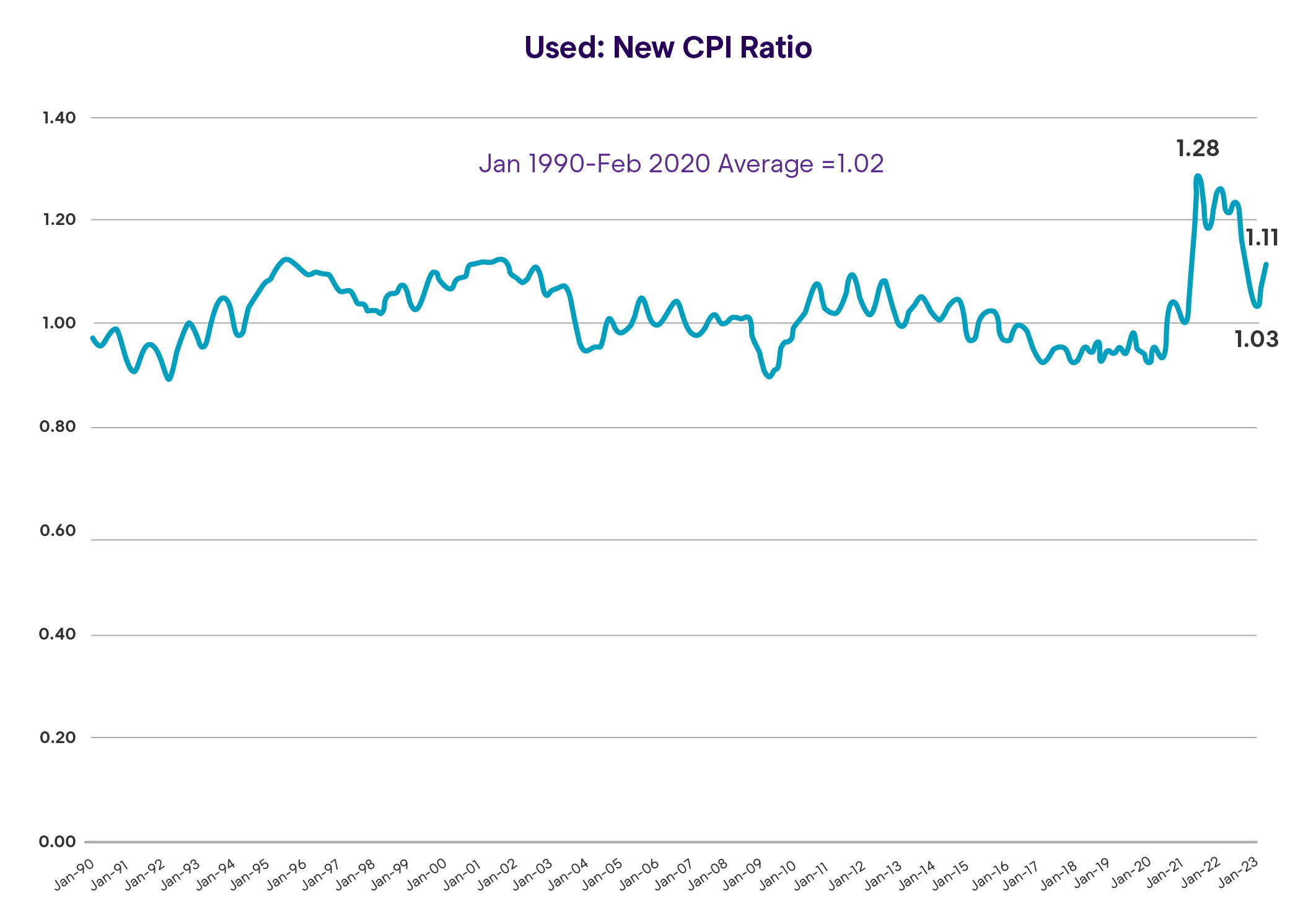May/June 2023 Kontos Kommentary
The following commentary is produced by Tom Kontos, Chief Economist, ADESA Auctions.1
Summary
Average wholesale used vehicle prices softened from their April peaks in May and into June. Retail used vehicle sales and Certified Pre-Owned (CPO) sales continue to be well below pre-pandemic levels.
Wholesale Market Trends*
According to ADESA US Analytical Services’ monthly analysis of auction industry used vehicle prices by vehicle model class, wholesale prices in May averaged $16,116—down 2.2% compared to April, down 9.7% relative to May 2022, and up 38.7% versus pre-pandemic/May 2019, as seen below.
Average prices have continued to soften in June and stood at $15,204 for the week ending June 18.
Further insights on wholesale price trends can be gained by holding constant for auction sale type, model-year age and mileage (the upper line in the following graph, which represents late-model units), as well as price trends for all vehicles sold (the lower line in the graph below).
Both groups show relatively modest price declines from their spring/tax season peaks in April.
A spreadsheet with historical data broken out by model class for the table and graph in this section has been provided with this report for your convenience in tracking these trends.
Retail Market Trends
The following graph and table summarize data on retail used vehicle and CPO sales through May based on ADESA US Analytical Services’ analysis of data from NADA and Motor Intelligence, respectively.
Retail used vehicle sales overall are down 2.3% year-to-date while CPO sales are up 6.0%, reflecting strong demand for late-model used units. Nevertheless, sales for both groups are down from stronger sales in 2021 and pre-pandemic.
#Trendspotter
With inflation at the forefront of economists’ and consumers’ minds, I have been including periodic references in this report to the consumer price index (CPI) for new and used vehicles. In my analysis of trends in these metrics, I have noted that the pandemic created an aberration in the historical relationship between used and new vehicle prices, which tended to move in tandem. I noted that the used vehicle CPI had reached a ratio to the new vehicle CPI of nearly 1.3 to one in 2021, when that ratio normally hovers around 1:1. The “correction” in used vehicle prices that occurred during the latter half of 2022 brought that ratio down to historical levels. However, the spring/tax season uptick that began in early 2023 and reached its zenith in April reversed this pattern and resulted in another elevated ratio between used and new vehicle prices.
The graph below shows the state of affairs in this ratio through May.
My expectation is that the softer wholesale prices in May and June will bring this ratio down again. Please stay tuned.
Refer to the Q1 2023 report for a comprehensive analysis of market conditions from the previous quarter.
1Disclaimer: The views and analysis provided herein relate to the vehicle remarketing industry as a whole and may not relate directly to ADESA US. The views and analysis are not the views of ADESA US, its management, its subsidiaries or its parent companies; and their accuracy is not warranted.
Forward-Looking Statements: The statements contained in this report and statements that ADESA US, its management, its subsidiaries or its parent companies may make orally in connection with this report that are not historical facts (including, but not limited to, expectations, estimates, assumptions and projections regarding the industry and business) may be forward-looking statements. Words such as “could,” “should,” “may,” “will,” “anticipates,” “expects,” “intends,” “plans,” “believes,” “seeks,” “estimates,” “promises,” “likely to,” “outlook,” “potential,” “project” and similar expressions identify forward-looking statements. Forward-looking statements are subject to risks and uncertainties that could cause actual results to differ materially from the results projected, expressed or implied by the forward-looking statements. Factors that could cause or contribute to such differences include those matters disclosed in the “Risk Factors” identified in Carvana Co.’s Securities and Exchange Commission filings. Neither ADESA US nor its subsidiaries or parent companies undertakes any obligation to update any forward-looking statements.


